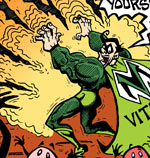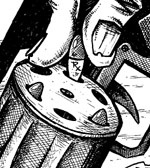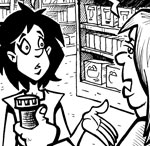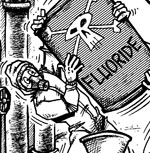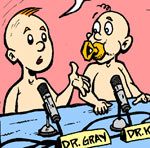What Are Vitamin D3 Overdose Symptoms?
| Share on Facebook | Share on Twitter | Share on Google+ |
Vitamin D3 toxicity is a very rare occurrence, but it sometimes happens as the result of defective manufacturing or extreme overdose of vitamin D3. If it's recognized in time it is 100 per cent treatable, although the symptoms can be quite unpleasant for several months or more.
What Is Vitamin D3?
Vitamin D3 is the body's storage form of vitamin D. It's the chemical the skin makes when it is exposed to strong sunlight, and it's the chemical found in vitamin D capsules. The other main form of vitamin D, vitamin D2, is what is made when vitamin D3 is activated for the body's use by the liver.
How Much Vitamin D3 is Too Much?
Even if you have severe vitamin D3-deficiency, you don't need to take more than, at most, 10,000 IU of vitamin D3 every day. This is more vitamin D3 than you could ever get from any food other than cod liver oil. To get even this dose of vitamin D3, you would have to consume:
- 3 kilos (6.6 pounds) of salmon, or
- 160 whole eggs, or
- 6 kilos (13 pounds) of button mushrooms.
You could get 10,000 IU of vitamin D3 by taking 6 tablespoons (90 ml) of cod liver oil, but there is high likelihood you could not keep that much cod liver oil in your digestive tract long enough for the vitamin D3 to be absorbed.
An acute overdose of vitamin D3 usually occurs with a single dose of 1,000,000 IU or more. Chronic overdose with vitamin D3 usually requires taking 77,000 IU a day for several months. These overdoses are uncommon, but they are not unknown.
What Happens in a Vitamin D3 Overdose?
Excess vitamin D3 causes a buildup of calcium first in the fluids of the digestive tract, and then in the bloodstream. Calcium mixed with fiber makes a kind of "concrete" that causes constipation. The impact on the bowel can cause vomiting, nausea, and lack of appetite.
As the overdose continues, the symptoms spread. There can be a buildup of calcium in the kidney causing kidney stones. The additional calcium activates calcium channels in the heart and blood pressure rises, also stressing the kidneys. Calcium crystals can be deposited in the skin, in muscles, and even in the brain and eyes, although few people continue taking vitamin D3 overdoses long enough for the condition to become permanent.
The Good News About Vitamin D3 Overdose
The good news about vitamin D3 overdoses is that they are easy to treat. The first step, obviously, is to stop taking vitamin D. The second step is to avoid calcium-rich foods (milk, salmon, and leafy greens, plus any foods that are unusually high in vitamin D, such as cod liver oil). If the there is swelling in the brain or muscles, it may be necessary to take steroids, prescribed by a physician.
Almost 100 per cent of the time, vitamin D3 overdoses are corrected in 30 days or less. Keeping up your vitamin D3 levels never requires more than 10,000 IU a day, and if you stick below that dosage, you need have no fears of vitamin D3 toxicity.
Selected Reference:
Hathcock, JN; Shao, A; Vieth, R; Heaney, R (2007). "Risk assessment for vitamin D.". The American Journal of Clinical Nutrition. 85 (1): 6–18.
-
Skin CareMen Skin Care
-
Free ResourcesFree eBooks
-
A good laugh and a long sleep are the best cures in the doctor's book.Irish Proverb
-
Featured Health SupplementAll ingredients are assessed at molecular level to ensure synergy, safety and effectiveness.
 This is crucial because when some ingredients are combined they will help create other substances in the body.
This is crucial because when some ingredients are combined they will help create other substances in the body.
-


